Niagara Falls State Park
- December 29, 2023
- 0 comment
Niagara Falls State Park is one of America’s most iconic natural wonders, located on the border between New York State and Canada. The park is home to three waterfalls, including Horseshoe Falls, American Falls, and Bridal Veil Falls, each of which offers a unique and awe-inspiring view. Founded in 1885, Niagara Falls State Park is the oldest state park in the United States and has been drawing visitors from around the world for over a century.
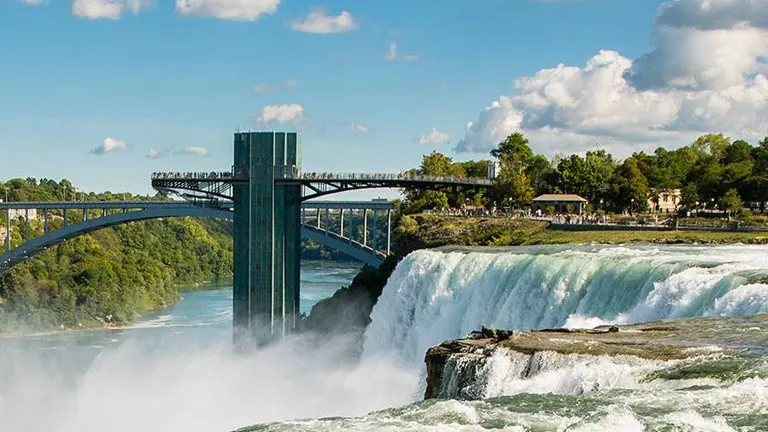
Since its establishment, Niagara Falls State Park has evolved into a sanctuary where visitors can immerse themselves in the dramatic landscapes shaped by the mighty Niagara River. The park’s meticulously maintained trails weave through verdant surroundings, providing vantage points that unveil the falls’ awe-inspiring beauty. The echoes of history resonate through the grounds, telling tales of Frederick Law Olmsted’s advocacy for preservation and Governor Grover Cleveland’s signing of the bill that paved the way for this enduring haven.
Today, the park continues to captivate global audiences, serving as a crossroads of culture, adventure, and natural marvels. From the thrilling Maid of the Mist boat tours to the exhilarating Cave of the Winds experiences, each step within the park offers a new perspective on the falls’ majesty. The blend of ecological conservation and recreational exploration manifests in a living testament to the delicate balance between humanity and the untamed forces of nature. As we embark on this exploration of Niagara Falls State Park, let us delve into the misty embrace of the falls, where every droplet narrates a story of
Characterizing Features of the Niagara Falls State Park
- Triple Waterfall Majesty: At the heart of Niagara Falls State Park lies a trinity of spectacular waterfalls—the iconic Horseshoe Falls, the powerful American Falls, and the delicate Bridal Veil Falls. Each waterfall possesses distinct characteristics, collectively creating an awe-inspiring panorama that draws millions of visitors annually.
- Historic Legacy as the Oldest State Park: Established in 1885, Niagara Falls State Park holds the esteemed title of the oldest state park in the United States. Its inception marked a crucial turning point in the nation’s approach to conservation, with the park becoming a pioneer in preserving natural wonders for public enjoyment.
- Architectural Genius of Olmsted and Vaux: The park’s early design was entrusted to renowned landscape architect Frederick Law Olmsted and architect Calvert Vaux. Their vision, implemented in 1887, focused on enhancing public access while safeguarding the natural and scenic elements, thereby setting the standard for thoughtful park planning.
- International Conservation Efforts: The impetus to protect Niagara Falls extended beyond national borders. While the park was established on the U.S. side, similar conservation plans were underway in Ontario, leading to the creation of Queen Victoria Park in 1887. This binational commitment underscores the international significance of Niagara Falls as a shared natural treasure.
- National Historic Landmark Status: In 1963, Niagara Falls State Park was designated a U.S. National Historic Landmark. This recognition underscores not only the park’s scenic beauty but also its historical and cultural importance, solidifying its place in the tapestry of American heritage.
- Continuous Operation Through Eminent Domain: Niagara Falls State Park is not only the oldest but also the first state park established through eminent domain. This legal mechanism allowed the state to acquire and protect the falls from private exploitation, ensuring that this natural wonder remains accessible to the public in perpetuity.
- Extensive Renovation and Modernization: A comprehensive $44-million refurbishment in 2003 modernized the park’s facilities, including the observation tower, visitor center, bridges, and trails. This commitment to ongoing improvement ensures that visitors have access to contemporary amenities while preserving the park’s timeless allure.
- Recognition as a Top Natural Attraction: In 2007, Niagara Falls State Park was named the 10th most beautiful spot in America by The Today Show. This accolade highlights its enduring popularity and universal acclaim as a must-see destination for travelers seeking the wonders of the natural world.
- Year-Round Appeal and Seasonal Transitions: Niagara Falls State Park’s charm is not confined to a particular season. From the vibrant bloom of spring to the snow-covered majesty of winter, each season offers a unique perspective, ensuring that the park remains a captivating destination throughout the year.
- Diverse Recreational Opportunities: Beyond the falls, the park offers a diverse range of recreational activities, including hiking and walking trails, biking, fishing, and cross-country skiing. These options cater to a wide audience, making the park a destination for both adventure enthusiasts and those seeking a more leisurely experience.
History
Founded in 1885, Niagara Falls State Park boasts a rich history as the oldest state park in the United States, nestled on the border between New York State and Canada. Before its establishment, the lands surrounding Niagara Falls were under private control, limiting public access to this natural wonder. The visionary landscape architect Frederick Law Olmsted, a fervent advocate for preserving the falls’ surroundings, began championing their protection in the 1860s. His efforts, coupled with a strategic report prepared by Olmsted and State Surveyor James T. Gardner in 1879, led to a public campaign and, eventually, the signing of a bill by Governor Grover Cleveland in 1883.

This pivotal moment marked the authorization for the creation of the Niagara Reservation, the precursor to the state park, which officially opened in 1885. With Olmsted and architect Calvert Vaux at the helm of the early design, the park not only became a beacon of environmental conservation but also a testament to the enduring appeal of Niagara Falls, drawing visitors from around the globe for over a century. Today, as a National Historic Landmark, Niagara Falls State Park continues to weave together the threads of natural splendor and human preservation, inviting generations to marvel at its timeless beauty.
Importance in Conservation and Recreation of Niagara Falls State Park
Niagara Falls State Park stands as a dual beacon of significance in both conservation and recreation. Established in 1885, it represents a pioneering chapter in American environmental conservation, stemming from the foresight of individuals like Frederick Law Olmsted. The park’s inception marked a shift from private exploitation to public preservation, ensuring that the awe-inspiring beauty of Horseshoe Falls, American Falls, and Bridal Veil Falls would remain accessible to generations. As the oldest state park in the United States, its history is entwined with the evolution of conservation ethics.
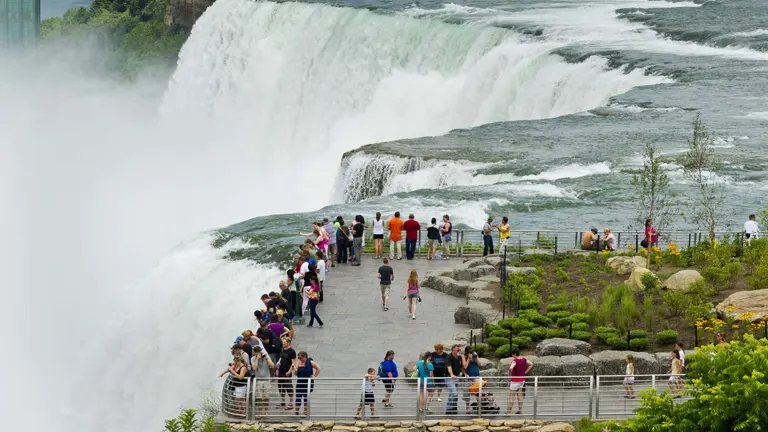
The park’s commitment to conservation is evident not only in the protection of its natural wonders but also in its continuous efforts to modernize facilities, trails, and infrastructure, striking a delicate balance between human enjoyment and the safeguarding of the environment. Simultaneously, Niagara Falls State Park serves as a haven for recreational pursuits, offering a diverse range of activities from hiking and biking to boat tours and scenic viewpoints. Its enduring popularity is a testament to the harmonious coexistence of conservation and recreation, illustrating the vital role such spaces play in fostering a deeper connection between humanity and the natural world.
Unique Location of Niagara Falls State Park
Located on the border between New York State and Canada, Niagara Falls State Park occupies a unique location, serving as a crossroads where the natural wonders of North America converge. Established in 1885, this iconic park is not merely a spectator to the world-renowned Horseshoe Falls, American Falls, and Bridal Veil Falls; it is an integral part of the international tapestry that these falls weave. The park’s position allows visitors to witness the mesmerizing dance of water and mist from American and Canadian perspectives, offering a panoramic spectacle that transcends national boundaries.
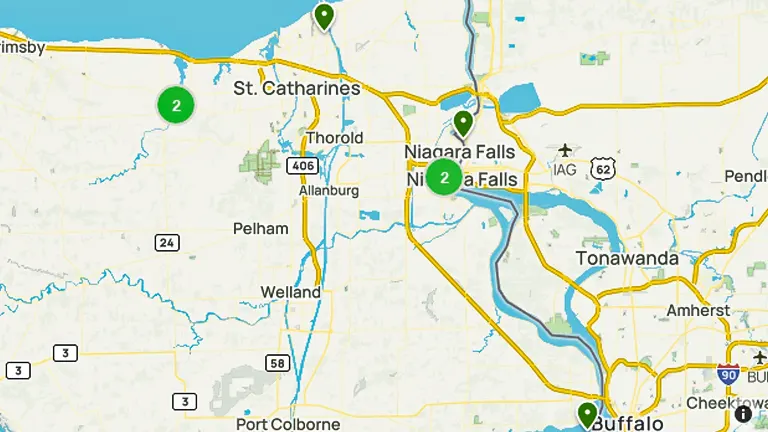
The coexistence of the park on the U.S. side with its Canadian counterparts reinforces the universal appeal of Niagara Falls, emphasizing the harmonious synergy between two nations connected by the sheer magnificence of this natural wonder. It’s a destination where the roar of the falls echoes the shared appreciation for the extraordinary beauty found in the heart of the North American continent.
Diverse Vegetation and Plant Species in Niagara Falls State Park
- Eastern Cottonwood (Populus deltoides): Towering along the riverbanks, Eastern Cottonwoods are a common sight in Niagara Falls State Park. Their heart-shaped leaves rustle in the breeze, contributing to the park’s picturesque landscapes. These trees thrive in the park’s riparian zones, benefitting from the proximity to the Niagara River.
- Red Oak (Quercus rubra): The Red Oak, with its distinctive lobed leaves, is prevalent in wooded areas of the park. These hardwood trees add to the vibrant autumn foliage, creating a stunning display during the fall season.
- White Birch (Betula papyrifera): The White Birch, characterized by its striking white bark, graces the park with its slender, elegant presence. Often found in clusters, these trees enhance the visual appeal of the landscape and contribute to the park’s overall biodiversity.
- Common Milkweed (Asclepias syriaca): Supporting local pollinators, Common Milkweed is a crucial part of the park’s wildflower population. Its fragrant flowers attract bees and butterflies, making it an essential component of the park’s ecosystem.
- Queen Anne’s Lace (Daucus carota): Along the park’s meadows and open spaces, the delicate and lacy blooms of Queen Anne’s Lace add a touch of elegance. These wildflowers not only beautify the landscape but also provide nectar for pollinators.
- Sycamore (Platanus occidentalis): Sycamore trees, with their distinctive mottled bark, line certain areas of Niagara Falls State Park. Their broad leaves provide ample shade, creating inviting spots for visitors to relax and enjoy the surroundings.
- Spicebush (Lindera benzoin): In the park’s understory, Spicebush adds a burst of color with its yellow flowers in spring. This native shrub is important for supporting local wildlife, including butterflies, as it serves as a host plant for the spicebush swallowtail butterfly.
- Common Elderberry (Sambucus canadensis): Along riparian zones and wetland areas, Common Elderberry thrives. Its clusters of white flowers and dark berries contribute to the park’s biodiversity, attracting birds and other wildlife.
- Bee Balm (Monarda didyma): With its vibrant red flowers, Bee Balm is a favorite among pollinators in the park. This native plant not only adds color to the landscape but also supports bees, hummingbirds, and butterflies.
- Maidenhair Fern (Adiantum pedatum): In shaded areas, Maidenhair Fern graces the forest floor with its delicate fronds. Its presence adds to the diversity of fern species in the park, creating lush and verdant pockets within the wooded landscape.


Niagara Falls State Park’s diverse vegetation enhances the visitor experience, providing not only stunning scenery but also contributing to the ecological health of this natural wonder. The carefully curated plant life reflects the park’s commitment to preserving the unique ecosystems surrounding Niagara Falls.
Fauna
- White-Tailed Deer (Odocoileus virginianus): White-tailed deer are a common sight in Niagara Falls State Park, especially in wooded areas. Their presence adds to the park’s natural charm, and visitors may encounter these graceful creatures while exploring the trails.
- Eastern Gray Squirrel (Sciurus carolinensis): Eastern gray squirrels are abundant in the park, showcasing their acrobatic skills in the trees. These small mammals contribute to the park’s lively ecosystem, and their playful antics are a delight for visitors.
- Migratory Birds: Niagara Falls State Park serves as a vital stopover for various migratory birds. Birdwatchers can spot a diverse range of species, including waterfowl, songbirds, and raptors, making the park a haven for birdwatching enthusiasts.
- Common Ravens (Corvus corax): Common ravens are often seen soaring in the skies above Niagara Falls State Park. Their distinctive calls and aerial displays add to the park’s natural soundtrack, providing an immersive experience for visitors.
- Monarch Butterflies (Danaus plexippus): During the monarch butterfly migration, Niagara Falls State Park becomes a temporary home for these iconic insects. The park’s flora, including milkweed plants, supports the butterflies as they rest and refuel on their journey.
- Various Fish Species: The Niagara River is home to diverse fish species, including bass, trout, and salmon. Fishing enthusiasts can cast their lines from the riverbanks or join guided excursions to engage in this serene recreational activity within the park.
- Red-Tailed Hawk (Buteo jamaicensis): Red-tailed hawks are among the raptors that inhabit the park. Their keen eyesight and soaring flights contribute to the park’s dynamic ecosystem, highlighting the interconnectedness of wildlife in this natural setting.
- Eastern Chipmunk (Tamias striatus): Eastern chipmunks add a touch of charm to the park with their quick movements and distinctive markings. These small mammals are often seen foraging for food in the underbrush, contributing to the park’s biodiversity.
- Various Amphibians and Reptiles: Wetland areas and the Niagara River provide habitats for various amphibians and reptiles. Frogs, turtles, and snakes may be spotted, especially in areas with water features, adding to the park’s ecological diversity.
- Bald Eagles (Haliaeetus leucocephalus): The resurgence of bald eagles in the region has made them a captivating sight in Niagara Falls State Park. These majestic birds of prey contribute to the park’s ecological balance and represent a conservation success story.
Niagara Falls State Park’s fauna contributes to the rich tapestry of life in this natural setting, providing visitors with opportunities to connect with and appreciate the diverse wildlife that calls the park home.
Attractions in Niagara Falls State Park
1. The Niagara Falls
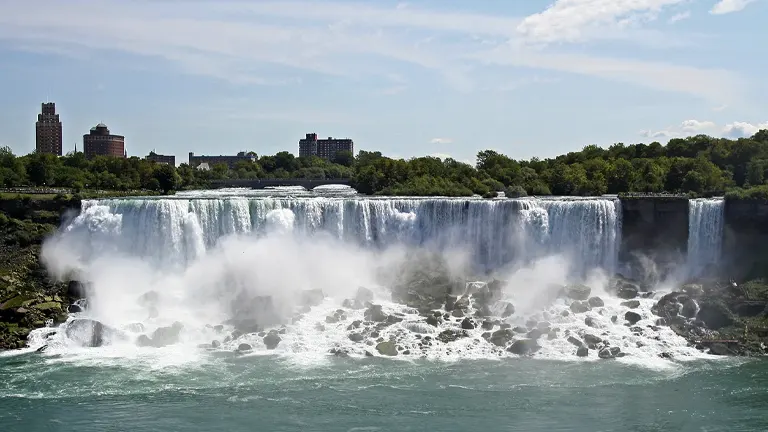
At the heart of Niagara Falls State Park are the stunning Horseshoe Falls, American Falls, and Bridal Veil Falls. These waterfalls are the main draw, attracting millions of visitors annually. Each one offers a unique and captivating view, creating an unforgettable scene of water, mist, and impressive natural power.
2. Cave of the Winds

For an exhilarating adventure, check out the Cave of the Winds tour. It gets you incredibly close to Bridal Veil Falls, allowing you to walk on wooden walkways and feel the rush of the falls. It’s a thrilling experience that’s perfect for both thrill-seekers and nature lovers.
3. Maid of the Mist
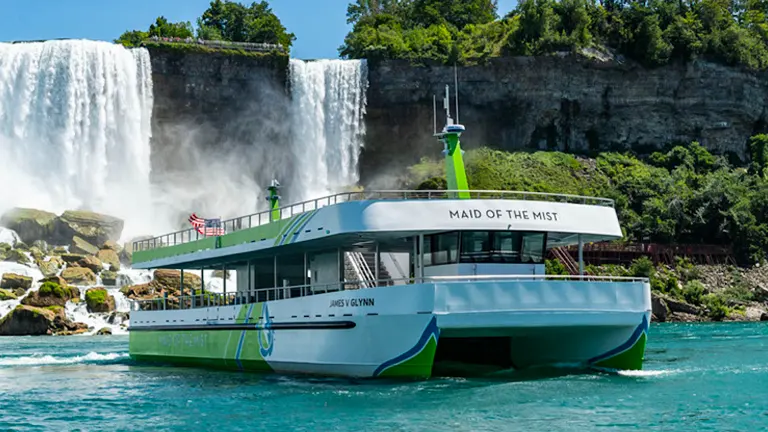
The Maid of the Mist boat tour is a quintessential Niagara Falls experience, providing an unforgettable voyage into the misty embrace of the falls. Visitors sail along the Niagara River, immersing themselves in the grandeur of Horseshoe Falls and experiencing the raw energy of the cascading waters.
4. Observation Tower

For fantastic views of the falls and the surrounding area, head to the Observation Tower. It’s an architectural marvel that provides a high vantage point for breathtaking perspectives. This spot is great for taking photos and quietly soaking in the beauty of Niagara.
5. Niagara Gorge
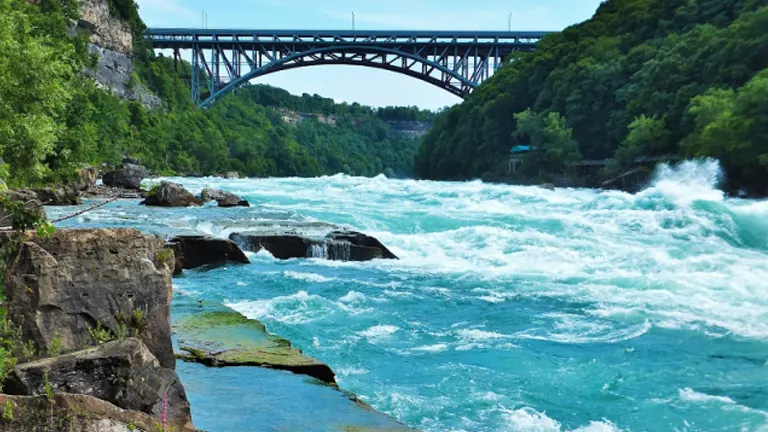
The Niagara Gorge Trail System allows adventurers to explore the rugged beauty of the Niagara Gorge. Well-marked trails provide opportunities for hiking and glimpses of local wildlife, all against the backdrop of the stunning gorge and the rushing waters.
6. Niagara Adventure Theater
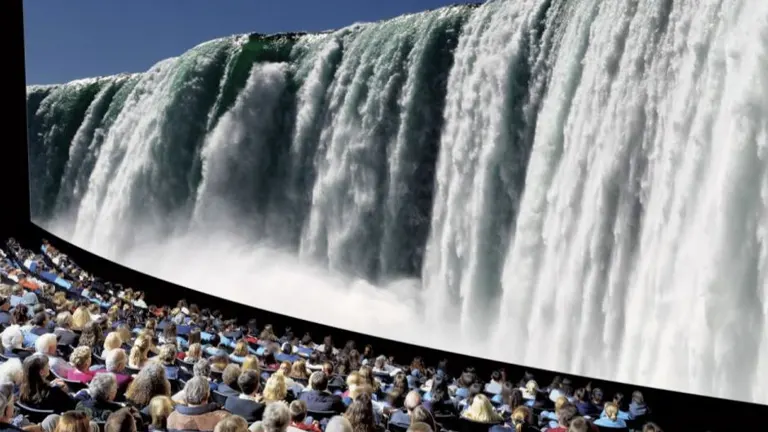
Discover the history and wonders of Niagara Falls at the Niagara Adventure Theater. Engage with the captivating stories through films and exhibits, gaining a deeper appreciation for the geological marvels that have shaped this iconic destination.
In Niagara Falls State Park, each attraction invites you to experience the natural beauty of this extraordinary landscape in a way that feels both accessible and awe-inspiring.
Recreational Activities in the Park
1. Hiking
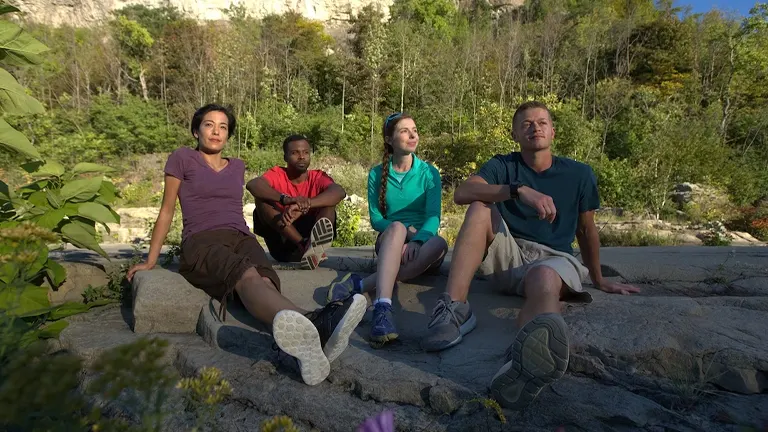
Explore the variety of trails at Niagara Falls State Park, perfect for hikers of all levels. Whether you’re up for a relaxed walk or a more challenging trek, the park has paths that wind through different landscapes, offering great views of the falls and the surrounding areas. From easy strolls along the riverbanks to tougher hikes into the Niagara Gorge, each trail lets you soak in the beauty of nature.
2. Biking

Take advantage of the well-kept biking trails that lead cyclists through the natural beauty around Niagara Falls. Biking gives you a different perspective, allowing you to cover more ground while enjoying the fresh air. The trails wind through green landscapes, providing glimpses of the falls, the river, and the diverse plant and animal life in the park. Whether you prefer a leisurely ride or a more energetic cycling adventure, you’re in for a unique experience.
3. Fishing
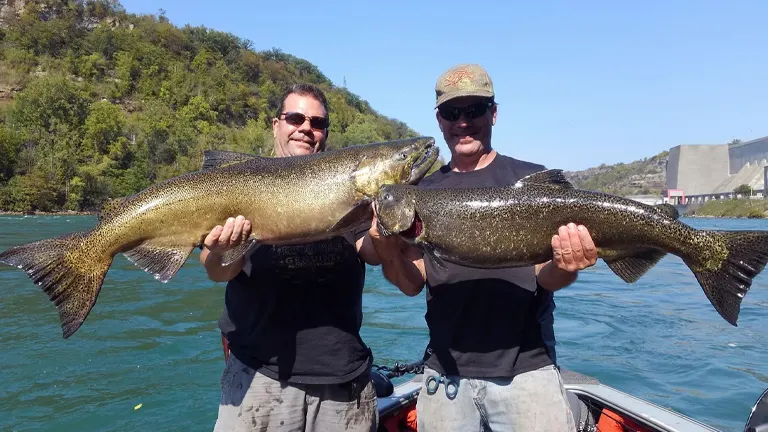
If you’re a fishing enthusiast, the Niagara River within the park is a prime spot. Whether you prefer casting your line from the riverbanks or joining a guided fishing excursion, you can enjoy the peaceful and rewarding activity. The river’s cool waters and picturesque surroundings make it an ideal place to try your luck and make some lasting memories.
4. Picnicking
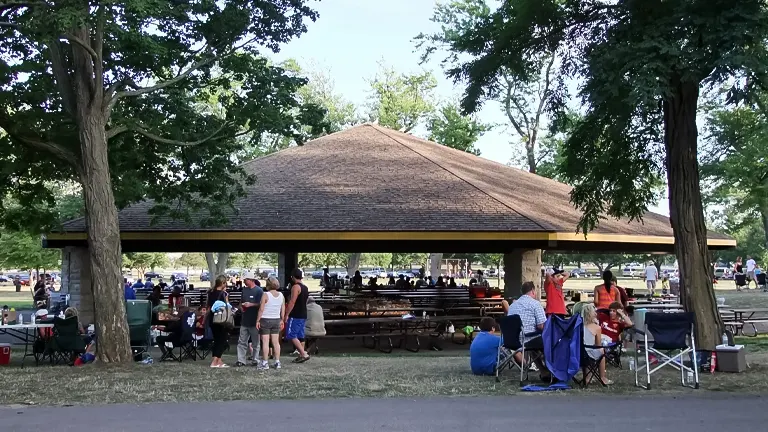
Take a break in the designated picnic areas amid the stunning scenery of Niagara Falls State Park. Surrounded by nature’s beauty, picnicking is a peaceful way to relax, whether you’re with family, friends, or on a solo adventure. Enjoy your own packed meal or grab some local treats, all while soaking in the park’s natural charm.
5. Camping
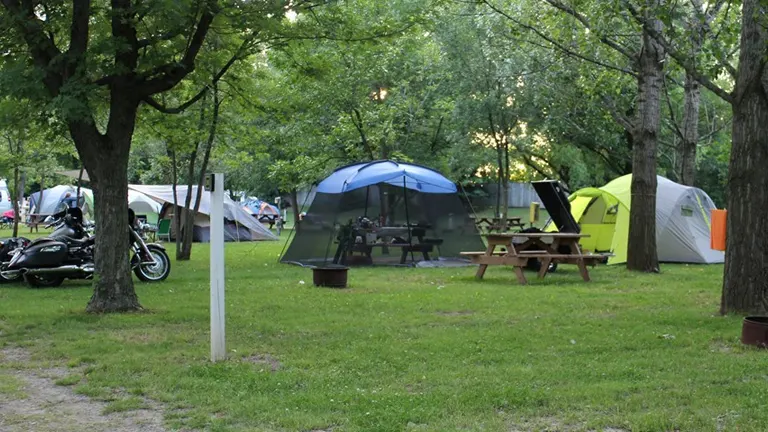
For a more immersive experience, the park offers camping facilities where you can spend the night surrounded by nature’s sounds. Camping adds an extra layer of adventure to your visit, letting you wake up to the sounds of rushing water and rustling leaves. Whether you’re pitching a tent or settling into a camper, camping at the park is a chance to embrace the tranquility of the night and the magic of the falls. It’s a great way to create lasting memories for nature lovers and adventure seekers alike.
Experience the harmonious blend of outdoor pursuits at Niagara Falls State Park, where each activity invites you to connect with the remarkable beauty of this natural sanctuary.
Facilities and Amenities in Niagara Falls State Park
- Visitor Centers: Informative and welcoming visitor centers within the park provide guests with essential information, maps, and exhibits, enhancing their understanding of the falls’ geological and cultural significance.
- Restaurants and Cafes: Niagara Falls State Park offers a range of dining options, from casual cafes to scenic restaurants. The Top of the Falls Restaurant on Goat Island provides a panoramic view of Horseshoe Falls, creating a unique dining experience.
- Gift Shops: Gift shops throughout the park allow visitors to take home souvenirs and memorabilia that capture the essence of their Niagara Falls adventure.
- Restrooms: Well-maintained restroom facilities ensure visitor comfort and convenience throughout the park.
- Parking: Ample parking facilities are available, allowing easy access for visitors to explore the various attractions within the park.
Tips for Visiting Niagara Falls State Park
- Best Time to Visit: While Niagara Falls State Park is open year-round, the summer months from June to August are particularly popular for outdoor activities and boat tours. However, each season offers a unique perspective, and the park’s attractions are accessible throughout the year.
- What to Wear: Given the mist and potential changing weather conditions, wearing waterproof or water-resistant clothing, comfortable footwear, and bringing layers is advisable for an enjoyable visit.
- Safety Precautions: Visitors are urged to adhere to safety guidelines, stay on designated paths, and follow any instructions provided by park staff to ensure a secure and enjoyable experience.
- Admission Fees and Passes: While there may be admission fees for specific attractions and parking, various passes and packages are available, offering flexibility and potential cost savings for those planning to explore multiple facets of the park.
Recommendation
I highly suggest venturing into Niagara Falls State Park for an enchanting fusion of natural wonders and historical significance. This park, celebrated for its diverse ecosystems, iconic landmarks, and recreational offerings, provides a distinctive and immersive experience. Engage in contemplative outdoor pursuits like hiking and wildlife observation, actively participating in continuous conservation initiatives. The picturesque trails, historic landmarks, and cooperative conservation initiatives establish Niagara Falls State Park as an essential destination for those in search of a harmonious blend of nature and recreational discovery.
Conclusion
In conclusion, Niagara Falls State Park stands as a timeless testament to the delicate balance between conservation and recreation. As visitors immerse themselves in the natural wonders, historic significance, and recreational opportunities offered by the park, they become part of a narrative that spans generations and encapsulates the enduring allure of one of the world’s most extraordinary destinations.
FAQs
- Is Niagara Falls State Park Free to Enter? Yes, the park itself is free to enter. However, there may be fees for certain attractions and activities within the park, such as the Cave of the Winds tour or the Maid of the Mist boat tour.
- Can I Bring My Pet to Niagara Falls State Park?
While pets are allowed in certain areas of the park, they are not permitted in buildings, on tours, or in designated swimming areas. It’s advisable to check the park’s specific pet policy and ensure pets are on a leash. - Are There Restaurants or Cafes Inside the Park?
Yes, Niagara Falls State Park offers dining options, including restaurants and cafes. The Top of the Falls Restaurant on Goat Island provides a panoramic view of the falls, offering a unique dining experience. - How Long Does It Take to Explore the Park?
The time it takes to explore the park varies based on individual preferences and the activities planned. Visitors can spend a few hours enjoying the main attractions or make it a full-day experience, especially if they want to engage in hiking or additional tours. - Can I Visit Niagara Falls State Park in Winter?
Yes, the park is open year-round, and visiting in winter offers a different but equally enchanting experience. The falls are often partially frozen, creating a picturesque winter wonderland. Be sure to dress warmly and check for any seasonal closures. - Are There Guided Tours Available?
Yes, Niagara Falls State Park offers guided tours, providing informative insights into the history, geology, and ecology of the area. Guided tours may include walks, boat excursions, and even themed experiences for a more immersive visit. - Can I Take a Boat Close to the Falls?
Absolutely! The Maid of the Mist boat tour takes visitors remarkably close to the falls, providing a thrilling and wet experience. The boat tour is an iconic way to feel the power and grandeur of Niagara Falls. - Are There Annual Events or Festivals in the Park?
Yes, Niagara Falls State Park hosts various events and festivals throughout the year. From seasonal fireworks displays to special holiday events, there are often activities that add an extra layer of excitement to your visit. Check the park’s event calendar for the latest information.
As the sun sets over Niagara Falls State Park, the roar of the falls fades into a soft hum, and the park takes on a peaceful tranquility. Visitors can enjoy a range of activities, from hiking and biking to picnicking and fishing, or simply take in the stunning views of the falls from one of the many overlooks. The park also offers a range of amenities, including restaurants, souvenir shops, and guided tours, making it the perfect destination for a day trip or a longer vacation.


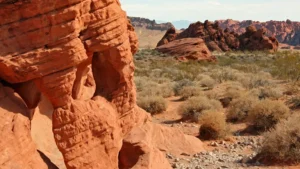
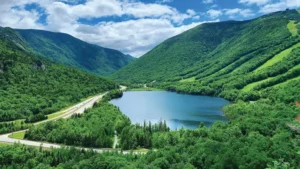

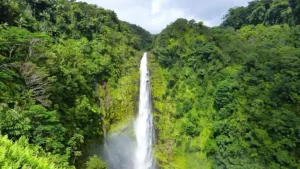
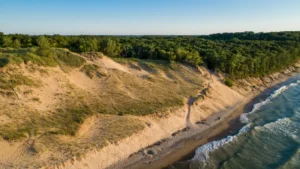
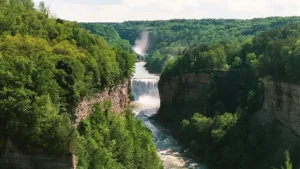
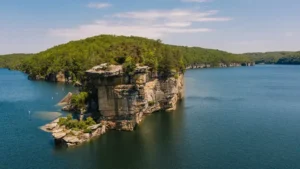


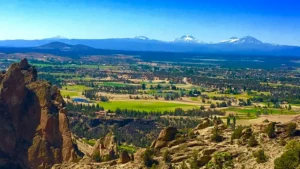
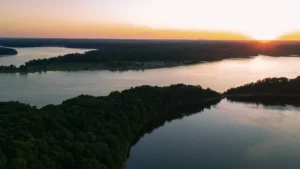
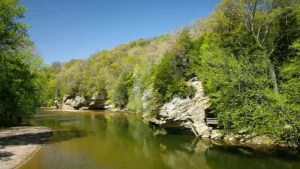
Leave your comment